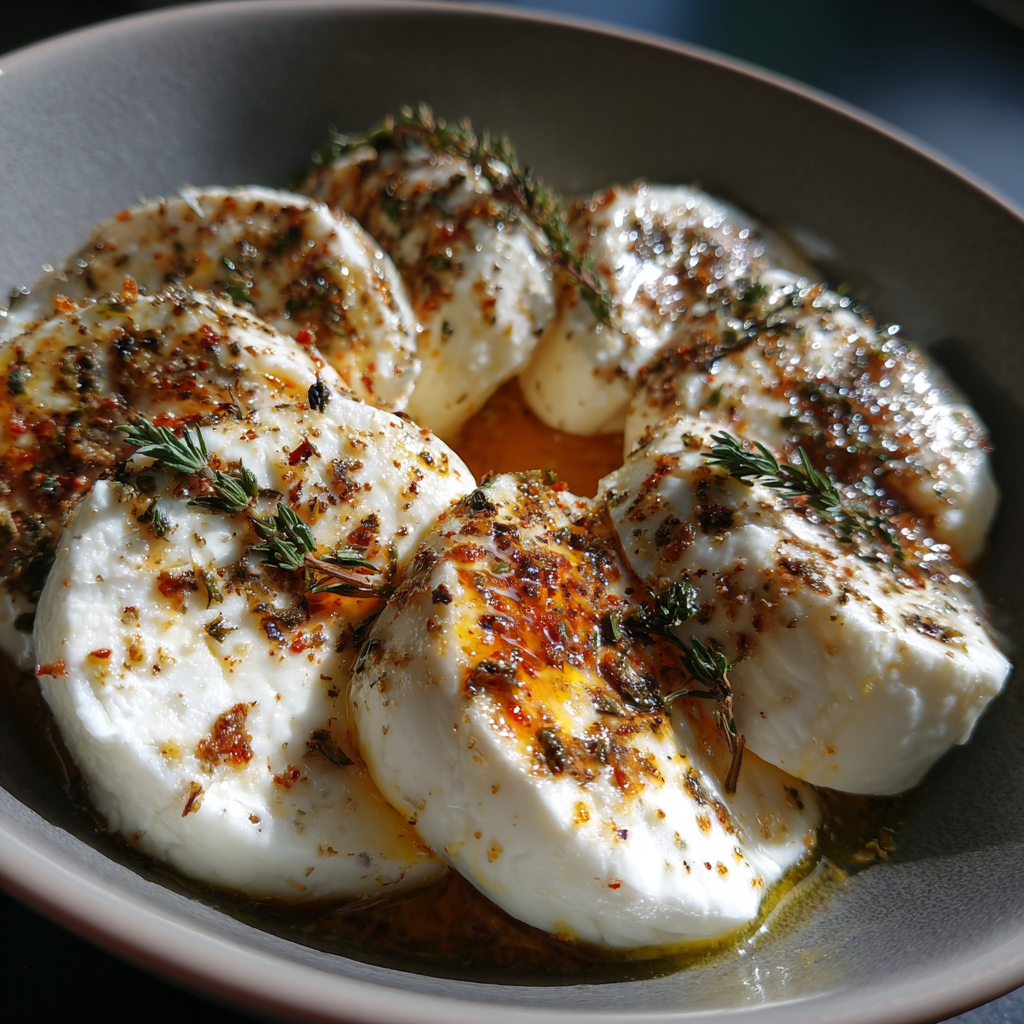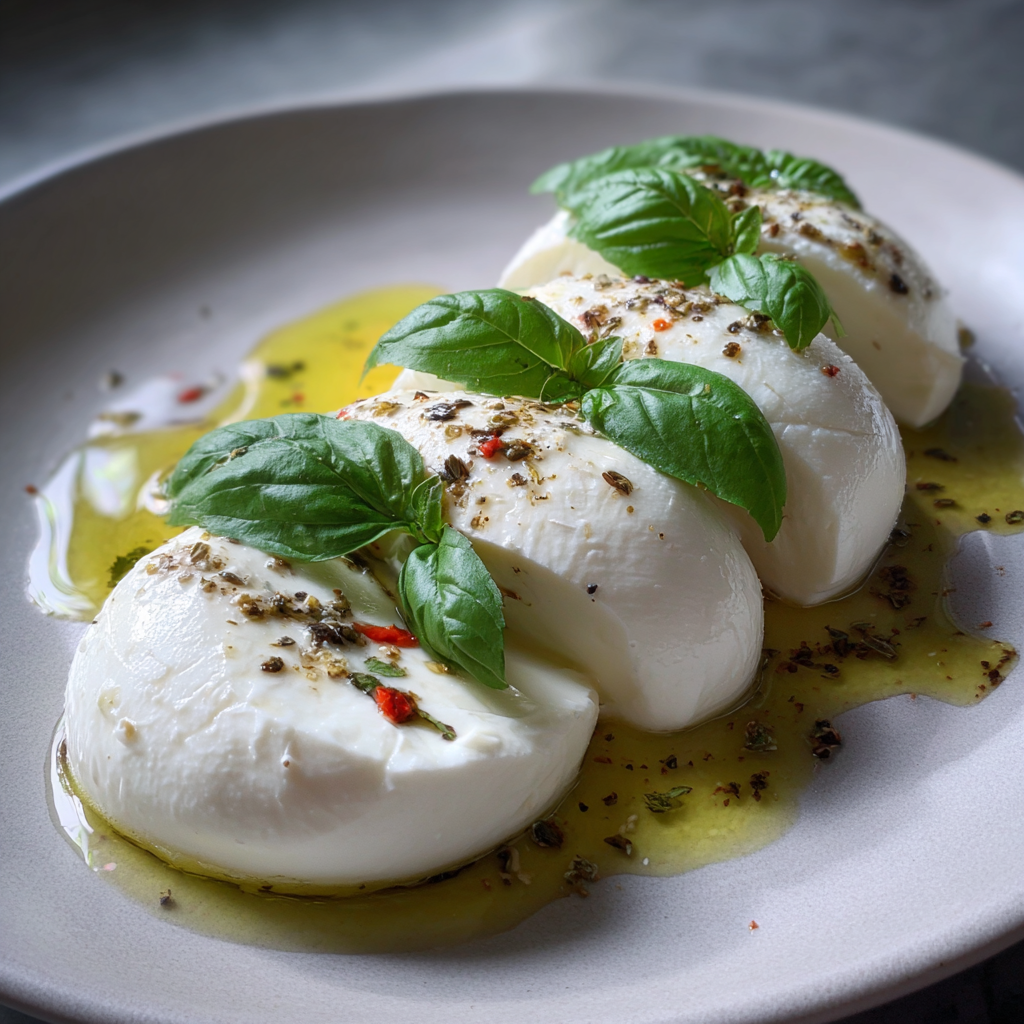Introduction
Bringing the taste of Italy into your kitchen is simpler than you may think, especially when it comes to making your own mozzarella cheese. This delightful cheese, renowned for its creamy texture and mild flavor, is a rewarding project that will elevate your culinary repertoire.
Making mozzarella cheese at home not only allows you to control the ingredients, but it also offers a unique sense of accomplishment. As you pull and stretch the curds, you will discover a tactile experience that connects you to the ancient traditions of cheese-making.
Ingredients
- 1 gallon whole milk
Whole milk provides the creaminess needed for mozzarella. The fat content aids in achieving that luscious texture, making it richer and more flavorful. - 1 ½ teaspoons citric acid
Citric acid is crucial for acidifying the milk, encouraging curd formation. This ingredient helps develop the cheese’s characteristic stretchiness. - 1/4 rennet tablet
Rennet is an enzyme that prompts the milk to curdle, forming solid curds and separating whey. It’s essential for creating mozzarella’s firm structure. - Kosher salt, to taste
Salt not only enhances flavor but also plays a role in the cheese’s texture. It helps to firm up the curds and extend the cheese’s shelf life. - Ice water
Ice water is used to cool the curds quickly after heating, halting the cooking process. This helps retain the cheese’s moisture and improve texture.
Directions & Preparation
Step 1: Prepare the milk
Start by gently heating the gallon of whole milk in a large pot over medium heat. Stir occasionally to prevent scorching, and heat until it reaches about 190°F. This step is crucial, as the heat will help the proteins in the milk denature, allowing for effective curd formation.
Step 2: Add citric acid
Once the milk reaches the desired temperature, dissolve the citric acid in a small amount of water and add it to the pot while stirring gently. This acidification leads to curd formation by adjusting the pH. You’ll notice the milk starting to curdle as it turns into curds and whey.
Step 3: Incorporate rennet
Dilute the rennet tablet in cool, non-chlorinated water and stir it into the milk gently. Let the mixture sit undisturbed for about 5-10 minutes, during which the rennet will work its magic, solidifying the curds. The texture at this point should resemble soft custard.
Step 4: Cut curds and heat again
With a long knife, cut the curds into 1-inch cubes, then gently stir them before heating the pot once more to about 110°F. This step helps expel excess whey and firm up the curds for a better cheese texture. Take care not to break the curds too small, as you want them to maintain some structure.
Step 5: Drain whey and rinse
Pour the curds into a colander lined with cheesecloth, allowing the whey to drain off completely. Rinse the curds under cold water to remove excess acidity. This process is essential to achieving the right flavor and texture in your finished cheese.
Step 6: Knead the curds
Transfer the curds to a bowl and begin kneading them while gradually adding salt. If the curds are too firm, you may need to briefly microwave or heat them in hot water to soften. Kneading develops the stretch characteristic of mozzarella, enhancing its texture.
Step 7: Form the mozzarella balls
Once kneaded and stretched, shape the cheese into balls. This can be done by pulling and folding the cheese until it’s smooth. The final step is sealing the moisture within, so it remains fresh. Your fresh mozzarella is now ready to be enjoyed!

The Importance of Milk Quality
When making mozzarella cheese, the quality of the milk plays a pivotal role in determining the final flavor and texture. Opt for high-quality, pasteurized whole milk to ensure richness. Avoid ultra-pasteurized milk, which can hinder curd formation due to its treatment. Fresh milk from local dairies will often yield the best results.
Mastering the Stretch
Achieving that iconic stretch can be a bit tricky; it’s crucial to knead the curds while they are still warm. If the cheese cools too much, it may become brittle and lose its beloved elasticity. Using hot water or a microwave can help in softening the curds, enabling you to create the perfect mozzarella balls.
Pairing with Flavors
Homemade mozzarella offers unparalleled versatility. While it’s excellent on its own, enhancing its flavor with fresh herbs—like basil or oregano—can elevate any dish. Try marinating your mozzarella in olive oil, garlic, and spices to create a delightful appetizer that bursts with flavor and freshness.
FAQs
What should I do if the curds don’t set?
If the curds aren’t forming, check that your milk hasn’t been overheated or that you used enough rennet. Ensure you’re using fresh rennet and consider letting the mixture sit a bit longer.
How can I achieve a creamier mozzarella?
For creamier mozzarella, consider using higher-fat milk or adding cream to the mixture before heating. This will result in a richer mouthfeel.
What happens if the cheese is too salty?
If your mozzarella turns out too salty, you can soak the balls in fresh water for 30 minutes to an hour to draw out some of the excess salt. Rinse and taste for desired saltiness.
Can I make this recipe using low-fat milk?
While low-fat milk can be used, it may produce a less creamy cheese. Whole milk is recommended for optimal texture and flavor.
What if my mozzarella is bland?
If the flavor is lacking, consider adding more salt during the kneading process. You can also enhance flavor with herbs or marinades after forming the cheese.
What can I add to the cheese to give it a different flavor?
Infuse the cheese with garlic, chili flakes, or herbs when kneading, or try marinating it in flavored oils for a unique twist.
Conclusion
Making mozzarella cheese at home is a fulfilling culinary journey that connects you to the artistry of cheese-making. With practice and patience, you will refine your technique, discovering the perfect balance of stretch and flavor that epitomizes this classic cheese.
So gather your ingredients and prepare to impress friends and family with your homemade cheese. Whether enjoyed fresh, melted on pizza, or paired with ripe tomatoes and basil, your mozzarella will surely shine.
Recipe Card
Notes
Additional serving suggestions: pair with a crisp salad, garlic bread, or roasted seasonal vegetables for balance.
For make-ahead, prep components separately and assemble just before heating to preserve texture.
Taste and adjust with acid (lemon/vinegar) and salt right at the end to wake up flavors.
